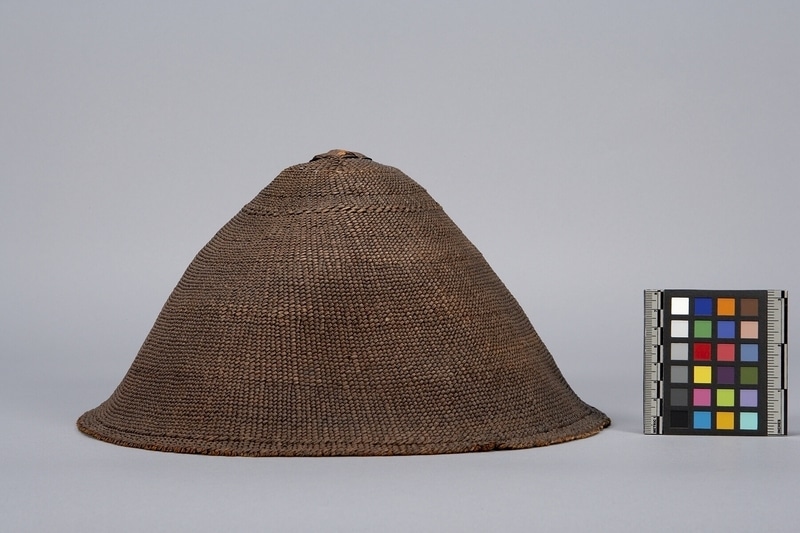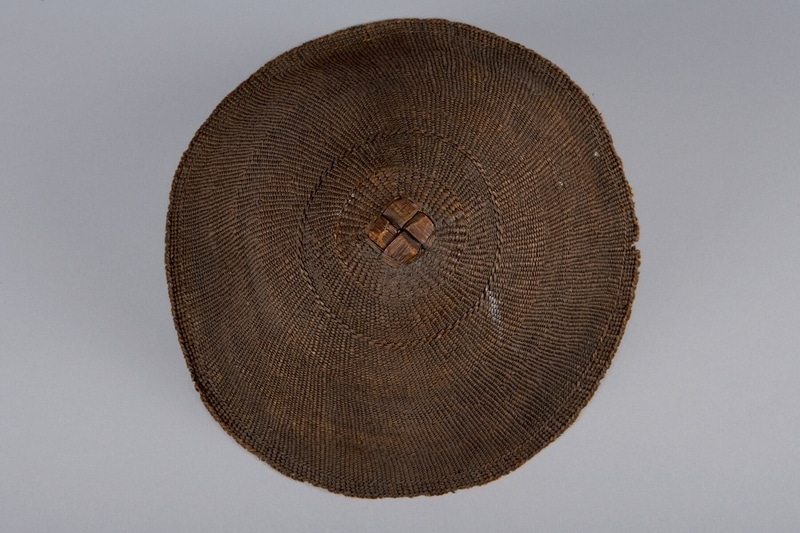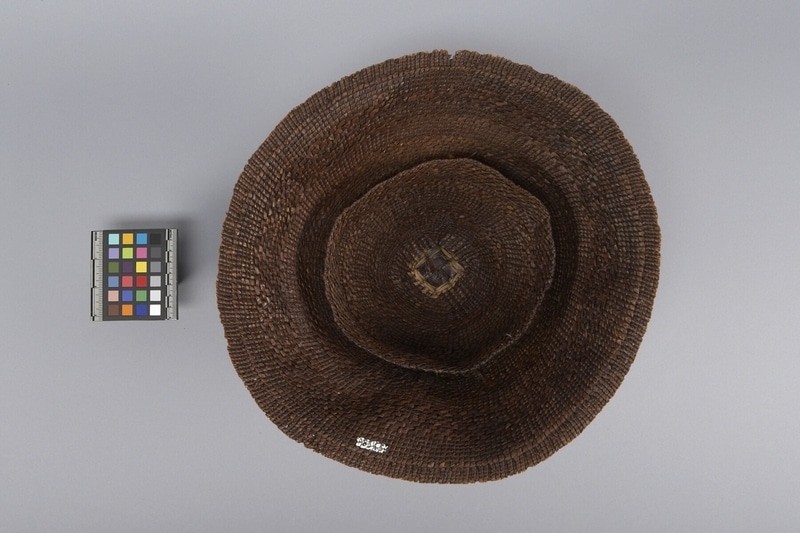Basketry Hat Item Number: A8345 from the MOA: University of British Columbia



Description
Dome-shaped, double-woven basketry hat. The warps and wefts are made from red cedar bark. A square at the top of the hat is done in a checkerboard plaiting and is outlined with double strand twining. The warps are then split and the twining becomes much finer. There are a few rows near the top which are accented with triple strand twining. This technique is also used near the bottom rim. The inside of the hat is also woven using twining, but the wefts and warps are larger in size. The checker work area near the top is outlined with a yellow grass-like material. There is a hat band attached to the interior lining.
History Of Use
Dome-shaped double woven hats, like this one, were worn as rain gear. A hat band inside the hat was used to fit the hat to the crown of the head, and to keep the sides of the hat away from the wearer's head - thereby creating an effective rain barrier.
Cultural Context
rain hat; basketry
Specific Techniques
Two strand and three strand twining were used for this hat. In two strand twining one weft (horizontal strand) passes over the warp (vertical strand) while the other passes under, so that the wefts are always in opposition to each other. Three strand twining is similar execept that the weaver begins with three weft strands that are seperated from each other by a warp. The weft that is furthest to the left is passed over two warps and then under one. The pattern continues with the next weft strand. This hat is also double woven. This means that an inner and outer hat were woven and attached at their rims.
Item History
- Made in British Columbia, Canada before 1900
- Collected in Fraser River, British Columbia, Canada during 1900
- Owned by Margaret L. Buttimer
- Owned by Alfred J. Buttimer before 1932
- Received from Alfred J. Buttimer (Donor) during 1932
What
Who
- Culture
- Coast Salish
- Previous Owner
- Margaret L. Buttimer and Alfred J. Buttimer
- Received from
- Alfred J. Buttimer (Donor)
Where
- Holding Institution
- MOA: University of British Columbia
- Made in
- British Columbia, Canada
- Collected in
- Fraser River, British Columbia, Canada
When
- Creation Date
- before 1900
- Collection Date
- during 1900
- Ownership Date
- before 1932
- Acquisition Date
- during 1932
Other
- Item Classes
- basketry
- Condition
- fair
- Current Location
- Case 7
- Accession Number
- 2003/0103